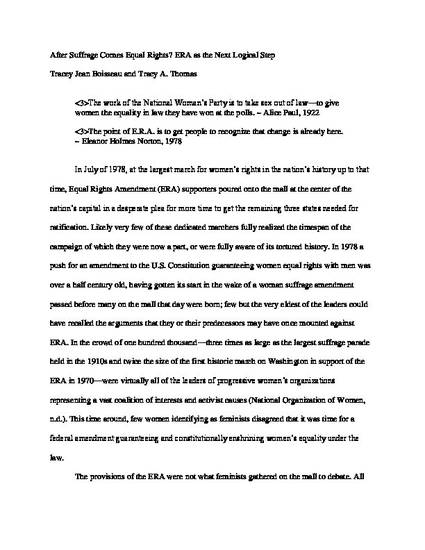
Contribution to Book
After Suffrage Comes Equal Rights? ERA as the Next Logical Step
100 Years of the Nineteenth Amendment: An Appraisal of Women’s Political Activism
(2016)
Abstract
Almost a full century in the making, the campaign for an ERA far exceeded in longevity the campaign for woman suffrage, however much a “logical next step” women's equality seemed to some following the spectacular achievement of the Nineteenth Amendment. The history of the amendment reveals how resistant to the idea of equality between men and women a political system -- even one that includes women as voters -- can be. In this chapter, we re-examine the route taken by the ERA through its many permutations in the century since the passage of woman suffrage. Proposed by Alice Paul in 1923 and immediately opposed by social feminists advocating protective labor laws, the ERA wound itself in and out of feminist, conservative, and public favor before its final defeat in 1982, three states short of adoption. Woven into the Supreme Court's analysis of Lochner and substantive due process, and the later evolution of equal protection law, women's equality -- or difference -- has been the foundation of much of the development of modern constitutional doctrine.
Keywords
- law,
- legal history,
- politics,
- nineteenth amendment,
- ERA
Disciplines
Publication Date
2016
Editor
Lee Ann Banaszak & Holly McCammon
Publisher
Oxford University Press
Citation Information
Tracy A. Thomas and TJ Boisseau. "After Suffrage Comes Equal Rights? ERA as the Next Logical Step" 100 Years of the Nineteenth Amendment: An Appraisal of Women’s Political Activism (2016) Available at: http://works.bepress.com/tracy_thomas/37/
